Manaus and deep in the Amazon!
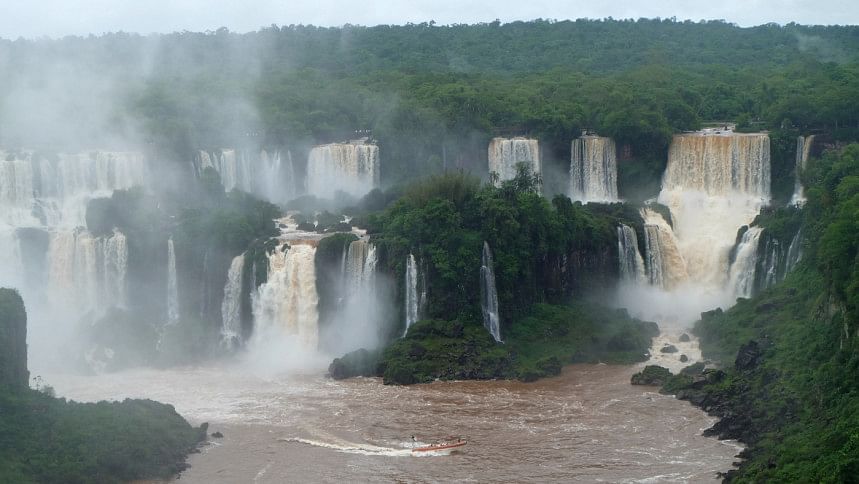
I have longed to visit the Amazon since my childhood, and I was bubbling with excitement as we flew to Manaus from Sao Paulo in the evening. Manaus is the capital city of the state of Amazonas in the North Region of Brazil. Located on the north bank of the Negro River, above the confluence of the rivers Negro and Solimões, which later form the mighty Amazon, it is the most populous city of both the Brazilian state of Amazonas and the Amazon rainforest, and thus the hub of tourism for the adventurous.
From the airport, we availed a microbus that took us to the riverfront in another 45 minutes. It was already dark, and heavy rain accompanied by gusty winds sent chills across our spine as our engine driven country boat cruised the River Negro deep in the Amazon Forest for another 30 minutes. Finally, we walked almost for a mile across sandy beach to our destination, the Amazon Eco Park Lodge on Tarumã River, a tributary of the Negro River. Extraordinarily scenic and situated in the Amazon Forest, the lodge has seventy cosy cottage bungalows under the rainforest tree canopy. Simply blissful!
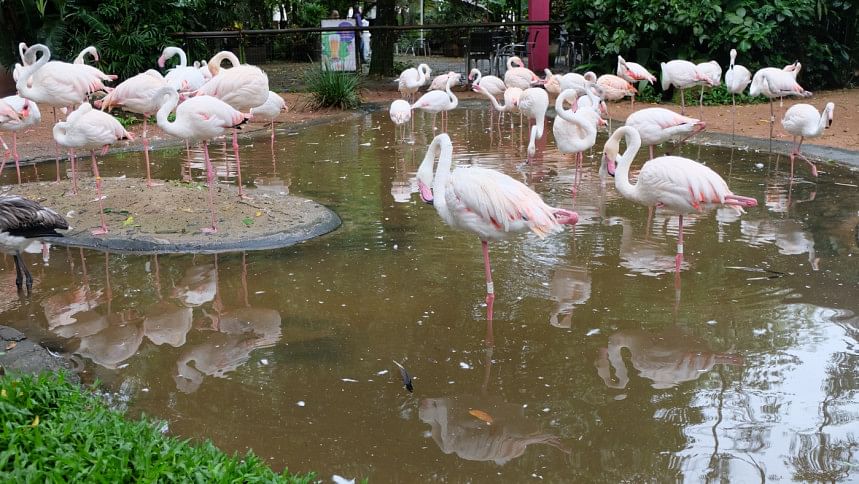
The very first morning under the able direction of our guide, Marcos, we went on an adventurous jungle trekking for almost two hours. The Amazon Rainforest is the world's richest and most-varied biological reservoir, containing several million species of insects, plants, birds, and other forms of life, many still unrecorded by science.
The luxuriant vegetation encompasses a wide variety of trees, including many species of cedar, mahogany, laurel, palm, and acacia, as well as rosewood, Brazil nut, rubber tree and many trees unknown to us. The fauna and flora of the Amazon were by far the most endearing traits of this wonderful virgin forest trail flooded with exotic orchids, giant trees, and medicinal plants.
As we trekked through the jungle, our guide showed the unique qualities of some trees. Some trees can be used to light fire just by rubbing pieces of wood against each other. Others clubbed to make incredible loud sounds. Some trees act as insecticides. Incredible! These are extremely helpful in emergency situations in case someone is lost in the jungle. Interestingly, no birds could be seen and our guide informed this is because most birds had been driven away or killed by poachers.
Exhausted on a hot and humid day, we finally gobbled well deserved lunch much to our gastronomic delight. Our cuisine included mouth-watering shovel mouth cat fish with lemon, fried surubim, baked pumpkin with spices and of course fried chicken and yellow rice and various desserts (cupcake pie with Brazil nuts, ravioli cream, passion fruit pudding).
One afternoon, we went on a canoe cruise to a community village of the Caboclos tribe to learn about their traditions and customs .These are persons of mixed Indigenous Brazilian and European ancestry. In fact, our guide, Ormaz belonged to the same tribe. He briefed us about a pharmacy of traditional medicinal herbs. We were then shown preparation of manioc (a coarse flour made from the cassava root) — a Brazilian delicacy added to almost every food item, and also used for rubber extraction and processing.
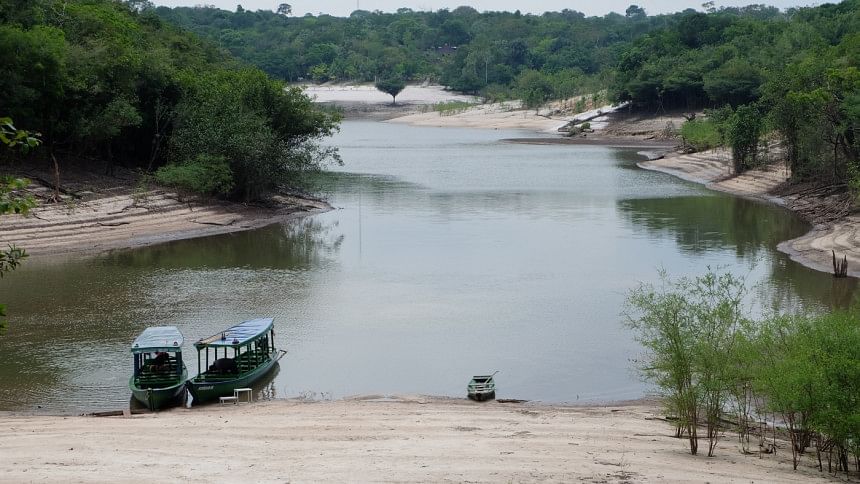
Our next destination was the monkey sanctuary maintained by a private foundation. Here, malnourished monkeys and monkeys suffering from different ailments are rescued from the forest and given food and treatment. We were overwhelmed to see the care being provided at the rehab centre.
One evening, we embarked on a canoe cruise to watch the catching of Piranha fish. A piranha is a freshwater fish that inhabits South American rivers, floodplains, lakes and reservoirs. Although often described as extremely predatory and mainly feeding on fish, their dietary habits vary extensively and they will also take plant material, leading to their classification as omnivorous. Although often described as extremely dangerous in the media, piranhas typically do not represent a serious risk to humans. However, the fish has long been banned in Bangladesh, labelled as "Rakkhoshi " by the locals. We enjoyed hot Brazilian coffee with snacks by the riverside.
A night safari to enjoy the beauty of the forest at night, with the possibility to spot alligators or other birds was indeed a memorable one. With the help of a flashlight, alligators were easily spotted – two shining red lights for eyes, amidst the foliage. After a frantic search, our guide was able to catch a baby croc with his bare hands and explained the habitat of this animal.
Throughout our journey, the only bird that we could sight were the egrets. Later settled for a well-deserved sumptuous dinner with grilled chicken fillet on mustard, fried fish, minced soy bean meat with lasagne, roasted manioc flour with onions and local fruit and vegetable salad.
After a wonderful and thrilling experience in the Amazon, we left for Manaus in the morning by a country boat. On reaching Manaus, we took a city tour. We first stopped at Ponta Negra beach, a neighbourhood that has a stunning white sand beachfront and popular nightlife area. Downtown Manaus is well known for its abundance of night clubs, bars and restaurants. In other words, visitors head to Ponta Negra beach not just to spend a day enjoying the sun and sand, but also to enjoy the area's famous night life.
The city's most famous building is the Italian Renaissance-style opera house, now protected as a national monument. The equally famous Justice Palace lies right next to the Amazonas Opera House.
Next in our list was the Mercado Adolpho Lisboa (Market) on the bank of the Rio Negro, protected as a national monument. Apart from its architecture, the market provided an insight of its bustling activity. The shops sold everything from fresh-caught fish, dried fish, beef, poultry and tropical fruits to T-shirts and local crafts, and the market is famous for local fast food, and idle gossips.
We then hopped to the Rio Negro Palace cultural centre. This elaborate palace was built as the residence of a German rubber merchant named Waldemar Scholz and was later the seat of the State Government of Amazonas. It was later converted into a cultural centre and we found time to browse the main house with precious furniture, cutlery and the adjoining art gallery of Brazilian works.
From Manaus, we flew to Iguazu via Sao Paulo again. A half an hour drive from the Iguazu airport brought us to our blissful resort. After a quick lunch at the resort with seafood, risotto, tropical salad and a cup of hot Brazilian coffee, we dashed to the famous Iguazu Falls by bus.
Iguazu Falls are waterfalls of the Iguazu River on the border of the Argentine province of Misiones and the Brazilian state of Paraná. Together, they make up the largest waterfall system in the world. The Iguazu River rises near the heart of the city of Curitiba. For most of its course, the river flows through Brazil; however, most of the falls are on the Argentine side. Below its confluence with the San Antonio River, the Iguazu River forms the boundary between Argentina and Brazil. We spent a few hours at the falls as we strolled and witnessed one of nature's wonders. The two hundred plus falls amidst rich green forest is an incredible spectacle.
The name "Iguazu" comes from the Guarani words, meaning "water," and "big." Legend has it that a deity planned to marry a beautiful woman named Naipí, who fled with her mortal lover Tarobá, on a canoe. In a rage, the deity sliced the river, creating the waterfalls and condemning the lovers to an eternal fall. Iguazu Falls is not only taller at the highest points than the more famous Niagara Falls, but it is also twice as wide!
We were lucky to spot the South American coati, parading before us near the falls. A member of the raccoon family, they are diurnal animals and live typically in the forest. They are omnivorous and primarily eat fruit, invertebrates, other small animals, and bird eggs.
After the falls, we visited Parque das Aves – a bird park with a huge collection of colourful birds of the Atlantic Rainforest in their natural habitat. Later availed a city tour of Foz do Iguaçu, one of Brazil's most-frequented tourist destinations. We were excited to visit the Tríplice Fronteira (Triple Frontier) location where Brazil, Argentina and Paraguay meet. Amazing!
Trekking through the forests and the canals in the Amazon Forest, experiencing the Iguazu Falls, as part of the enchanting two-week safari that also included Rio de Janeiro and Sao Paulo, will remain enshrined in our memory for many, many years to come.

 For all latest news, follow The Daily Star's Google News channel.
For all latest news, follow The Daily Star's Google News channel. 

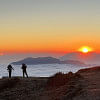
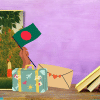





Comments